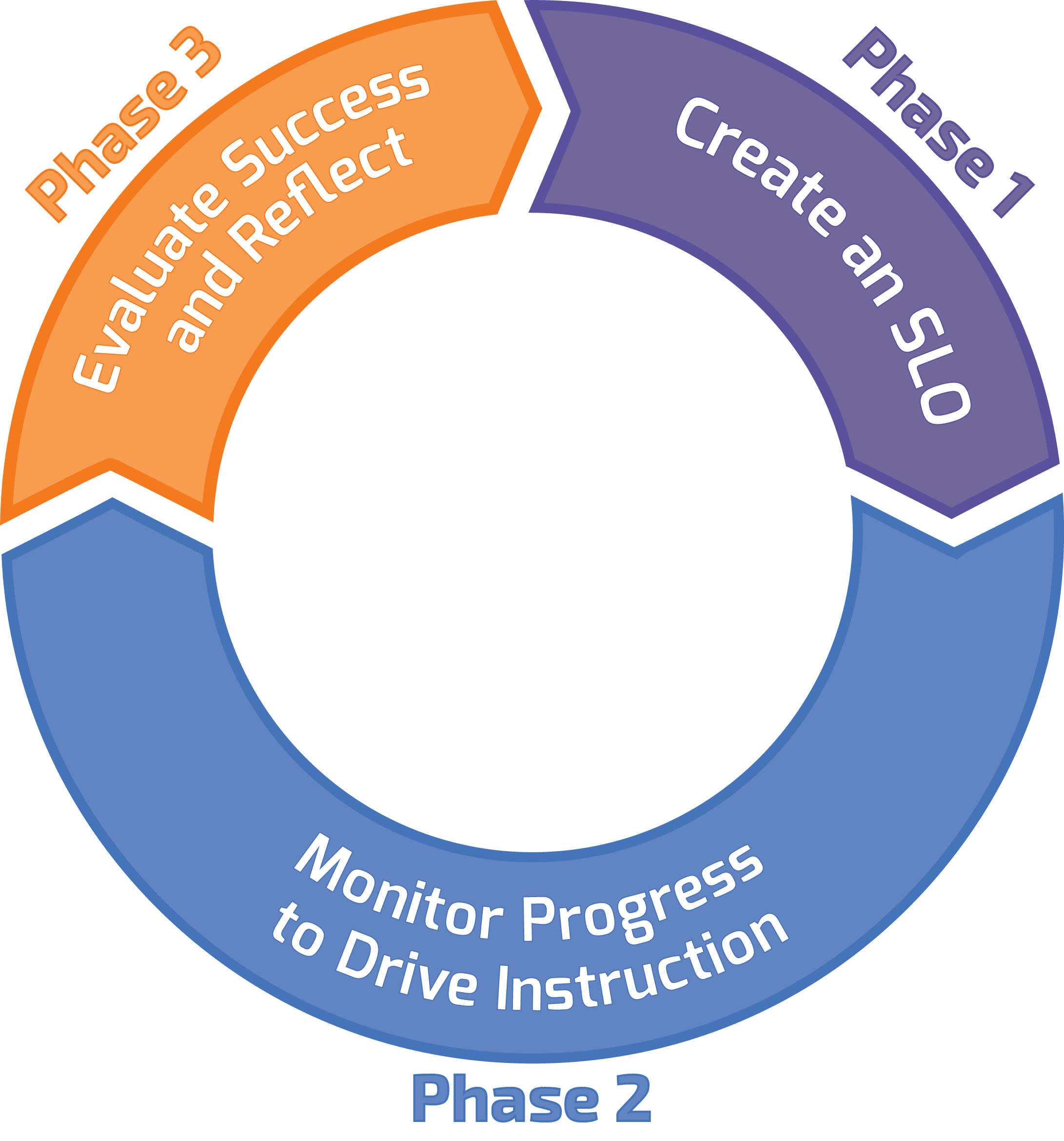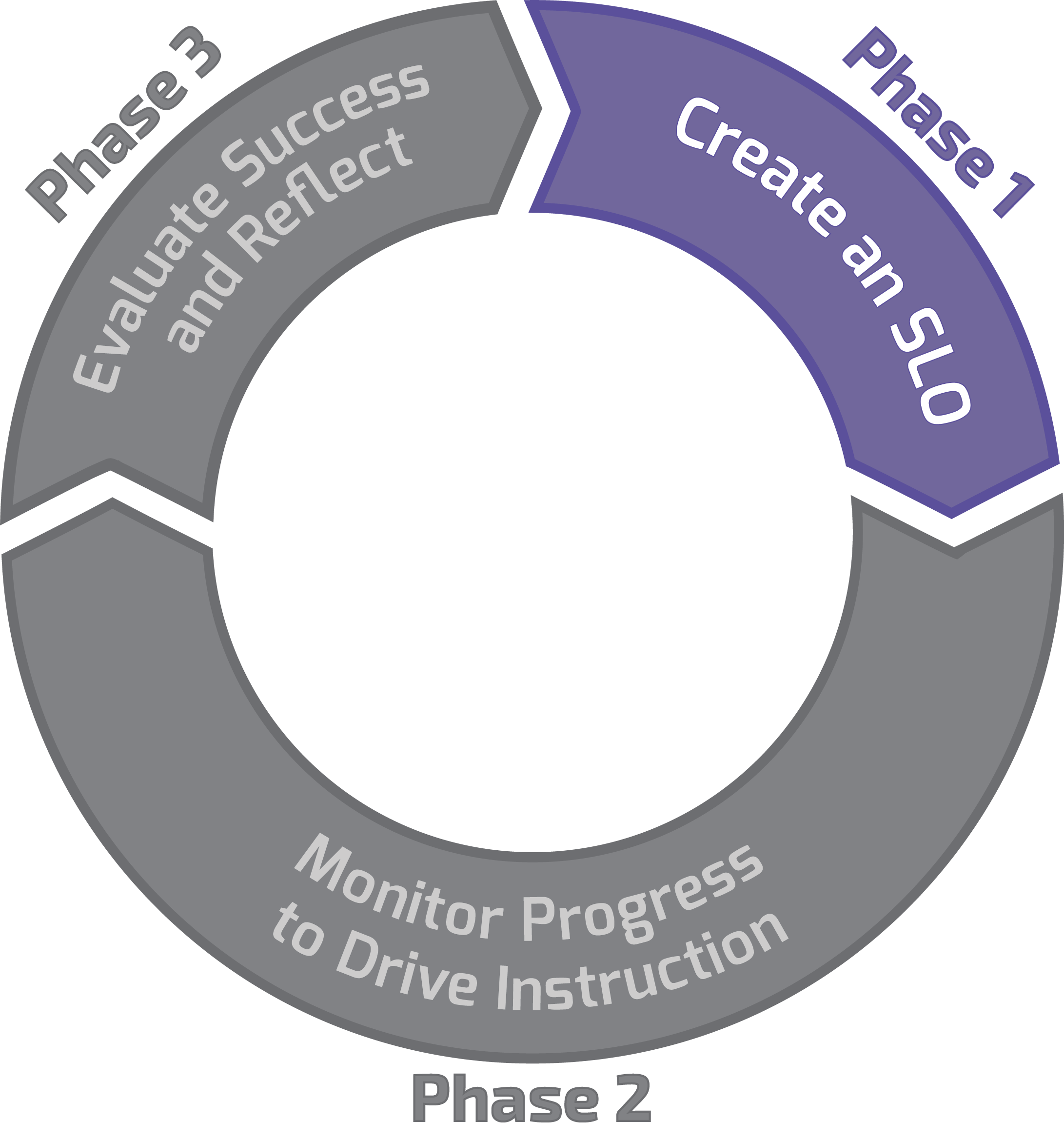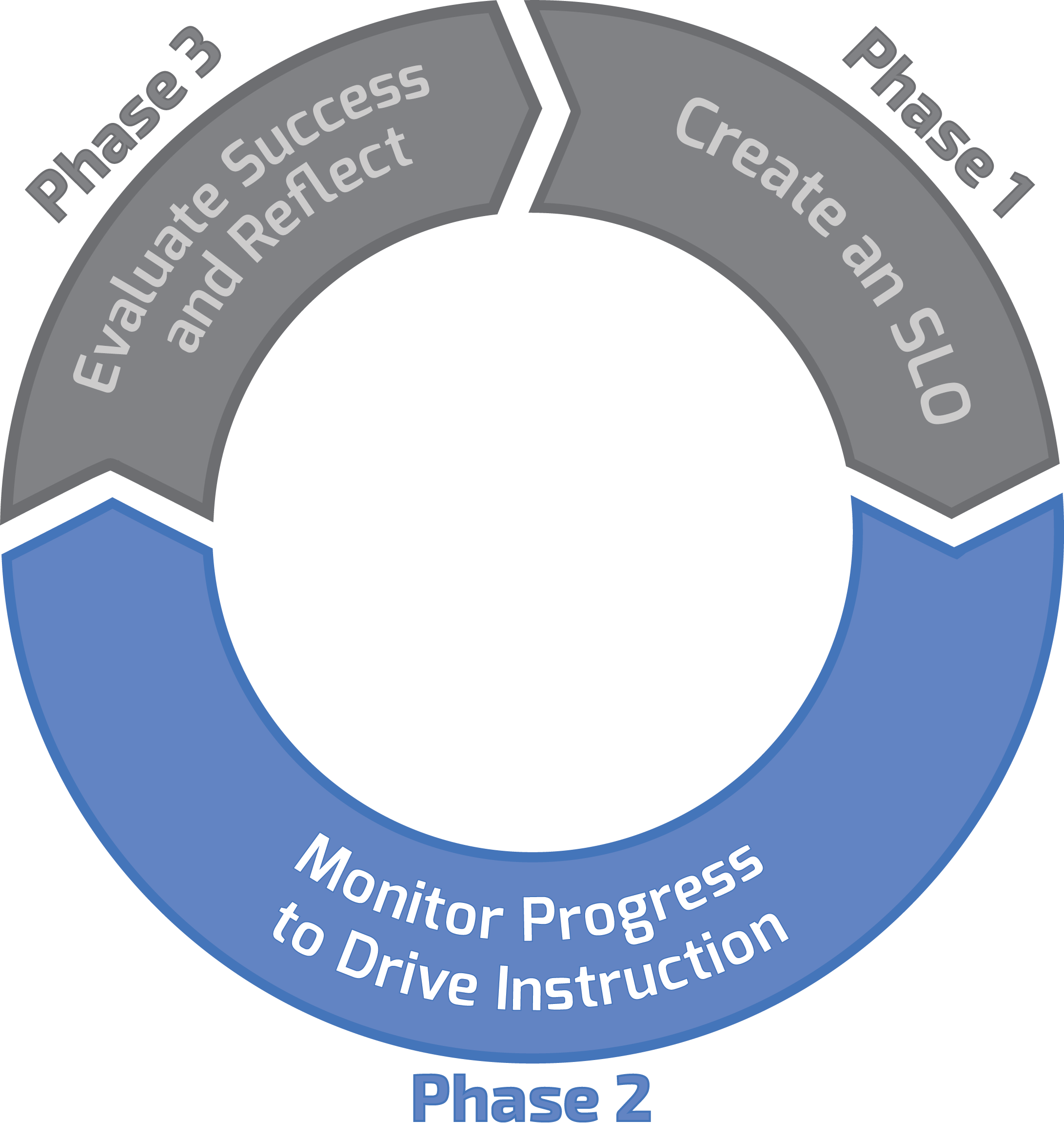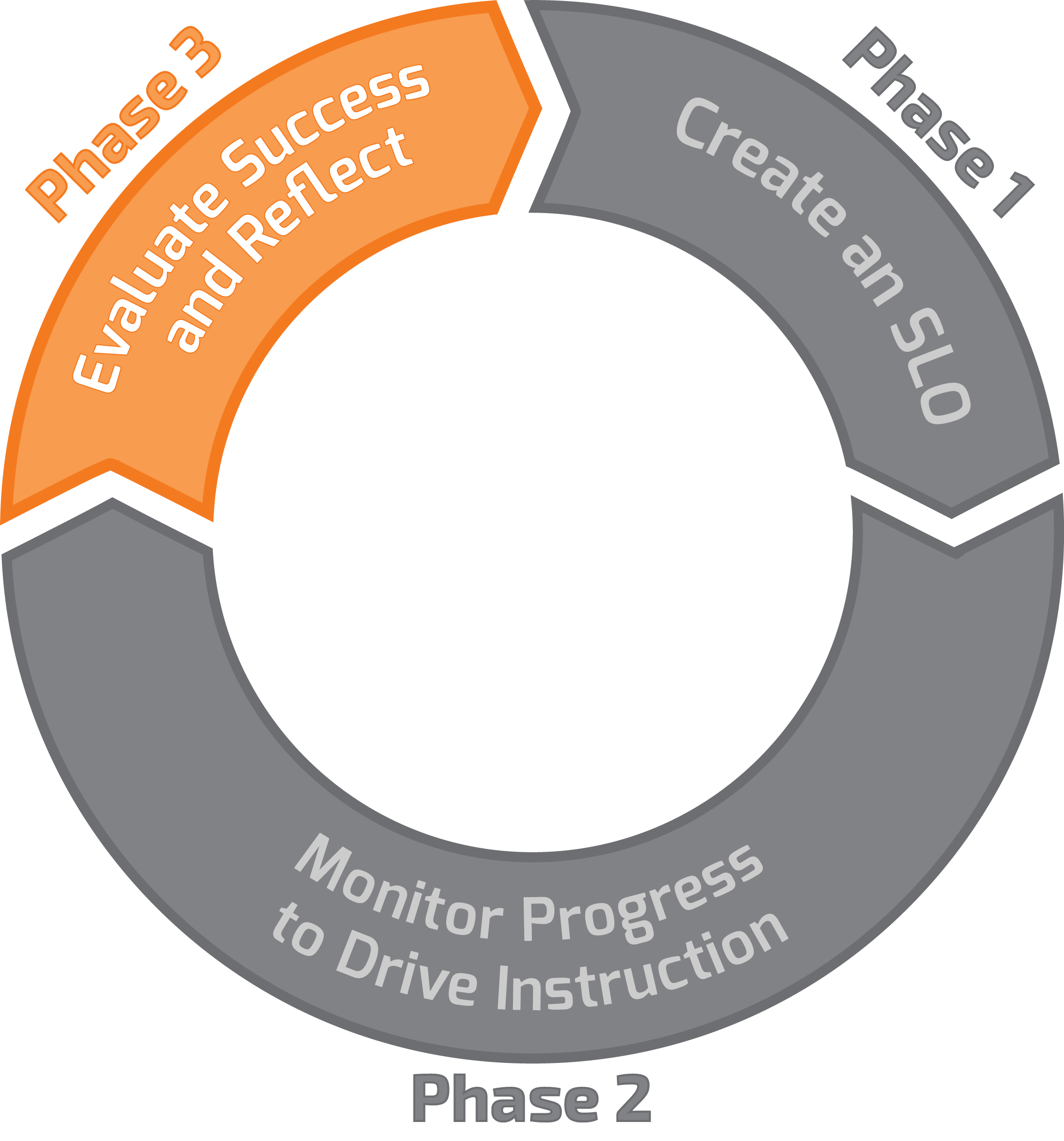Getting Started with Student Learning Objectives

Getting Started with Student Learning Objectives
Student Learning Objectives provide an effective process for improving instructional practices by encouraging thoughtful, deliberate, and evidence-based decisions that should ultimately result in improved student learning. Like any research-based practice, however, the impact of the process is greatly influenced by the quality of the implementation.
For teachers, the process begins with determining the focus of the SLO and then basically mirrors what we know about effective teaching as it progresses. For administrators, however, the process begins with an informal assessment of current campus capacity in key aspects of the process to guide the development of systems of support to facilitate implementation. The purpose of this guide is to help administrators support teachers in this valuable work.
The 3 Phase Process
Phase 1: Create a Student Learning Objective
The first phase focuses on purposeful planning of instruction. At the beginning of the course, teachers work with each other, their appraisers, and other support staff to identify foundational skills to address, create an instructional plan, and identify student starting points as the SLO is crafted. During this phase, teachers will develop and articulate a clear vision for student growth and strategies to be used to monitor progress toward those goals.

Step 1: What is the focus for my SLO?
Which content area will be the focus of the SLO? What is the SLO skill focus for this content area or subject? What led to the decision to select this content area and the SLO skill focus? Which TEKS align with the SLO skill focus?
Step 2: Who are my students?
Describe Typical Students: We will describe the skills of the TYPICAL student. Then the student who is WELL ABOVE TYPICAL – the best student. Then the student who is WELL BELOW TYPICAL – the most challenged student. Next the student who is ABOVE TYPICAL – a strong student. Then the student who is BELOW TYPICAL – a struggling student. Select Class(s): What I expect or assume my students will be able to do? What my students actually are able to do? Collect Data: Student Growth Tracker What my students actually are able to do?Step 3: What are my expectations for these students?
Develop a Targeted Skill Profile to describe expectations. Review supplemental data for each student covered in SLO. Establish a target for each student covered in SLO. Identify evidence sources to determine growth.Step 4: How will I guide these students toward growth?
How will you differentiate instruction for your students? What strategies will you use to monitor progress? How will you collaborate with your colleagues about student progress?Phase 2: Monitor Progress to Drive Instruction
After the Student Learning Objective is completed and approved by the appraiser, teachers will work with each other and their appraiser, engaging in ongoing dialogue about progress toward goals. These discussions will also be opportunities for teachers to receive feedback and support, and to develop strategies to adjust instruction based on progress monitoring. To improve efficiency in implementation, SLO processes should be integrated into existing support frameworks at each school.

In Phase 2 teachers will:
Monitor progress Meet with colleagues to discuss findings Adjust instruction Meet with appraiser at the midtermPhase 3: Evaluate Success and Reflect
This last phase takes place at the end of the course and includes a conversation between the teacher and his or her appraiser regarding the quality of the SLO, the level of expectations for student growth, the teacher’s effectiveness at monitoring students’ progress and adjusting instruction, and how well students did in meeting or exceeding growth targets. The final conversation is designed to help teachers and appraisers reflect on student progress and teacher practice throughout the course in order to plan for the refinement of instruction for the following year.

In Phase 3 teachers will:
Capture final student growth data Record student outcomes Reflect on student growth Reflect on instructional successes and challenges Meet with appraiser to review outcomes for both students as well as the teacher